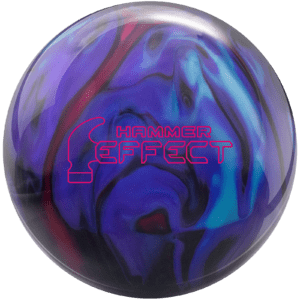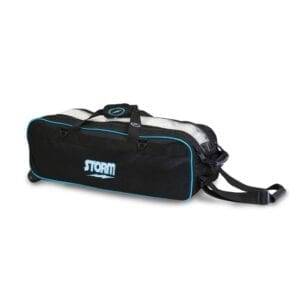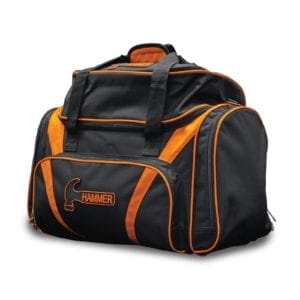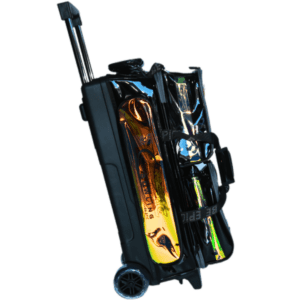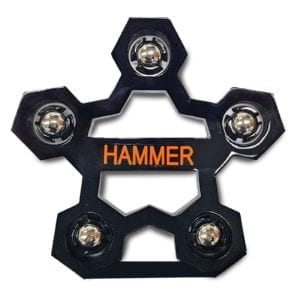Bowling How To's & Buyers Guides, Bowling News, Bowling Tips & Coaching Articles, Editorials, Intermediate Level Bowling Tips, Michael Cousins Bowling Blog, Physical Game Tips, Surface & Layouts
When Was the Last Time You Had Your Grip Checked?
The other day, we took a look at three things that you can do to your current bowling balls to get them ready for the upcoming league season. We did this to give you an alternative to purchasing a brand-new ball.
But those were just options that you could do to your bowling ball to improve its performance. There is, however, something very important, and often overlooked, to get yourself ready, as well: check your fit!
Your hand changes. And more often than you’d think. I see customers all of the time come in that have been using the same fit for 10-15 – heck, even 20 – years.
Is it possible that grip still fits you? I suppose it is “possible.” Is it likely? Probably not. And even if it is close, it probably isn’t optimal.
Getting your fit checked and, if need be, re-fitted can seriously improve your game. It can reduce pain – if there is any. It can reduce grip pressure. Increase revrate. Increase ball speed. Improve your shot making. And improve your scores.
In my opinion, fit is the single most important factor in our sport. A proper fit can totally reinvigorate you and your bowling career.
Anytime I talk about fit and the idea of getting re-fitted, two cases come to mind, and I often reference them to customers.
About a year and a half ago, a very good local player came in with complaints of pain and the inability to bowl for long periods of time due to wrist and hand fatigue. This is obviously an easy one on my end. But for the bowler, he could not believe his grip was causing this.
He had used that grip for years and he averaged 225-230 for the better part of 15 years using that grip. How could, all of a sudden, that same grip that allowed him to have all of that success now be the root of his problems?
It is simple . . . our hands change. Period.
They just do. Over time, as we get older and our hands change, they get less and less flexible. This was the case here. He had lost flexibility and his span was now far too long and his pitches weren’t proper. We shortened his span, relaxed his pitches and much of his problems were absolved.
Another scenario is that your fit was just never very good to begin with. Which happens sometimes. In my opinion, in recent years, this has gotten exponentially better, as PSOs are more knowledgeable today than maybe ever before. There is just such a wealth of knowledge that is readily accessible nowadays.
But back to my story: A guy came in – great bowler: 235-240 average – and told me that as he’s gotten older, he has struggled keeping his hand behind the ball long enough to throw it the way he used to throw it. He didn’t have any pain, but he simply couldn’t do what he used to do. He wanted to buy a wrist brace, as he thought father time was just hitting him with his best one-two-punch and his wrist was getting weak. I didn’t buy it.
I told him I would gladly sell him a wrist brace, but only after I took a look at his fit. He of course couldn’t believe his fit, the same fit he’s had since he was twenty years old, could be the problem.
Before I go forward let me preface this by saying that this man is 6’3″-6’4″ and a very solid guy. There was no way in my mind that his wrist could have just all of a sudden gotten that weak.
He went and got his bowling ball for me, I checked his fit, and to no surprise to me, his span was WAY too short. By about 1/2 an inch. Which obviously is not close. And I highly doubt that his hand grew that much since he was twenty years old.
I tell him this, and obviously he was taken aback.
In my opinion, he was slightly right in his assessment. I do believe his wrist has probably gotten a little weaker over time. Before, when he was younger, his wrist was probably strong enough to make up for the bad fit. But as he aged, that slowly changed.
I told him this and I explained to him why the wrist brace was essentially just a bandaid covering up the issue rather than fixing it. He agreed to try a new fit.
As I said, we lengthened him almost 1/2 an inch and the results were eye-opening. His PAP (Positive Axis Point) went from 4 over by 1/8 inch up to 5 1/8 over by 1 inch up.
His hand was in a significantly better place at the bottom, and he was able to stay under the ball throughout the shot without the need of a wrist brace.
These are just two examples I like to give to my customers. This doesn’t, in any way, mean that your fit is bad. You might not fit into either category. That is entirely possible. What it means is, it is worth getting it looked at and checked, and if you have a good relationship with your PSO, this should be a quick and easy process.













